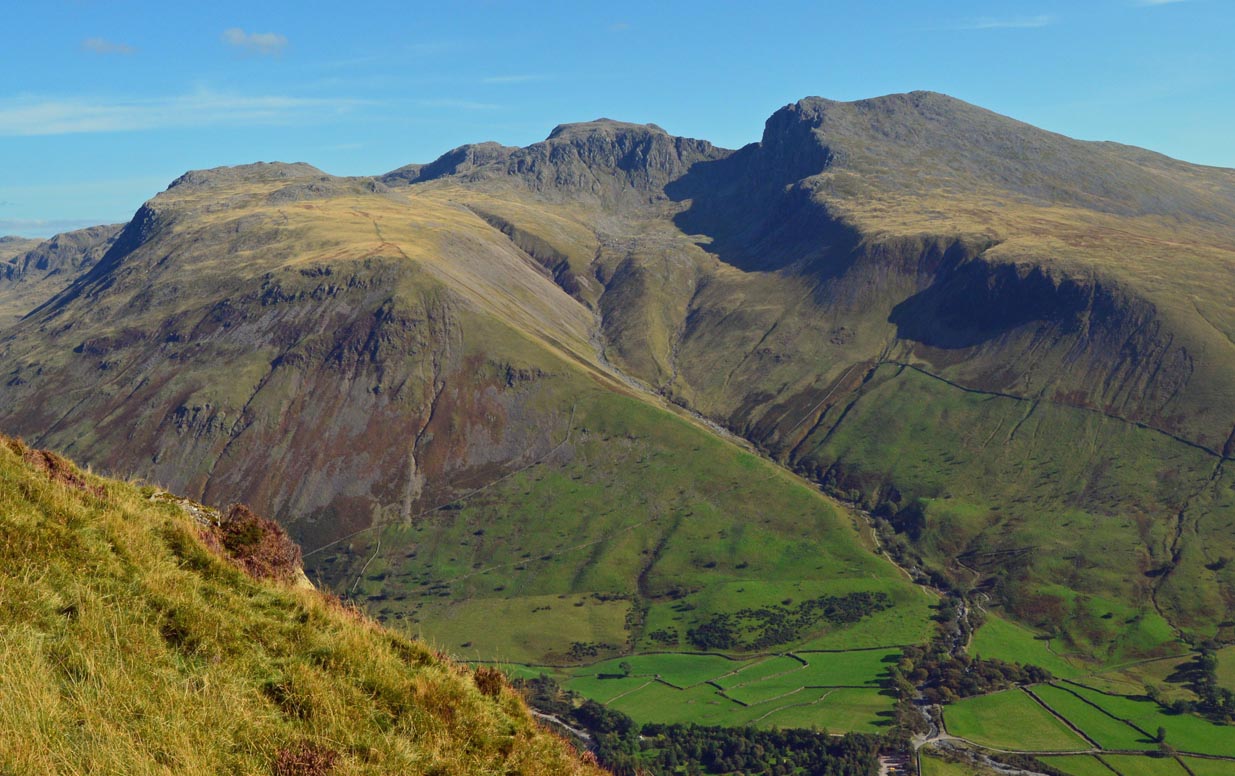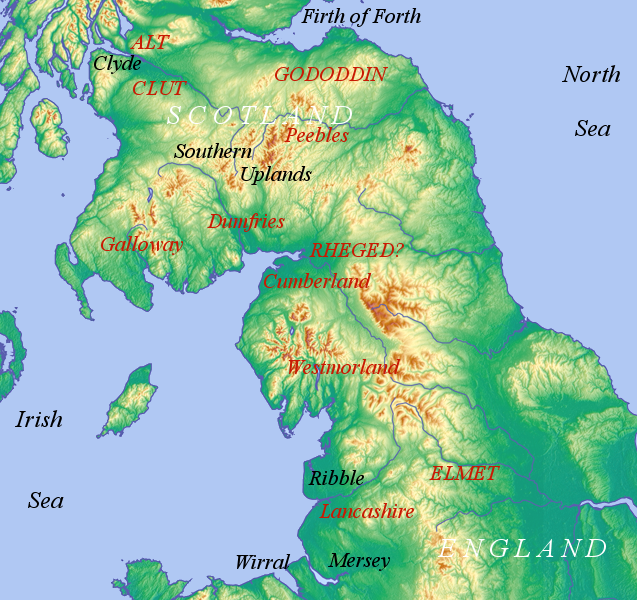|
Carnethy Hill
Carnethy Hill, the second highest of the Pentland Hills, is a hill 3 miles (5 km) north-west of Penicuik, Scotland. It lends its name to the Carnethy 5 hill race held annually since 1971, and the Carnethy Hill Running Club. Loganlea Reservoir lies on the Northwest flank of the hill. Etymology ''Carnethy'' is probably etymologically a Cumbric Cumbric was a variety of the Common Brittonic language spoken during the Early Middle Ages in the '' Hen Ogledd'' or "Old North" in what is now the counties of Westmorland, Cumberland and northern Lancashire in Northern England and the sout ... name. The main suggestion in past scholarship is that it is cognate with Welsh ''carneddau'', 'cairns'.Bethany Fox, University of Helsinki; ''The P-Celtic Place-Names of North-East England and South-East Scotland'', The Heroic Age, 10 (2007)www.heroicage.org(appendix a. References Mountains and hills of Midlothian Hills of the Scottish Midland Valley {{Midlothian-geo-stub ... [...More Info...] [...Related Items...] OR: [Wikipedia] [Google] [Baidu] |
Scald Law
Scald Law is a hill in Midlothian, Scotland. At it is the highest of the Pentland Hills. The hill is composed of Devonian volcanic rock. Etymology The origin of the name is uncertain. Some sources say it derives from the Scots Language word ''scawed'', meaning "bare." Others suggest that it derived from the Old Norse word ''sgat'' (meaning "rent") as cattle were pastured on the hill on payment of a rent. A further explanation is that it derives from ''scaldberry'', an old name for blackberry. The word '' law'' is derived from the Old English Old English (, ), or Anglo-Saxon, is the earliest recorded form of the English language, spoken in England and southern and eastern Scotland in the early Middle Ages. It was brought to Great Britain by Anglo-Saxon settlement of Britain, Anglo ... for hill. References External links * Mountains and hills of Midlothian Hills of the Scottish Midland Valley Volcanism of Scotland Devonian volcanism Marilyns of Scotland { ... [...More Info...] [...Related Items...] OR: [Wikipedia] [Google] [Baidu] |
Pentland Hills
The Pentland Hills are a range of hills southwest of Edinburgh, Scotland. The range is around in length, and runs southwest from Edinburgh towards Biggar and the upper Clydesdale. Etymology The name is first recorded for the farm of Pentland ( 1050, 1200) and probably derives from Brythonic ''pen llan'', head or top end of the church or enclosure. In the late 15th to mid-16th centuries, land transfers refer to Pentlandmure and Pentland – documents that also list adjacent parcels of land with such still-recognisable names as Loganehous, Hilend, Boghall and Mortounhall. 'Muir', in Pentlandmure, describes common grazings where the farm's livestock would be pastured in summer; and gradually the name was linked more specifically with the slopes of the nearby hills (perhaps Allermuir, Woodhouselee or Castlelaw). The name is completely unrelated to the name of the Pentland Firth in the north of Scotland. Timothy Pont mapped the area in the 1590s, and his work appeared in the m ... [...More Info...] [...Related Items...] OR: [Wikipedia] [Google] [Baidu] |
Lists Of Mountains And Hills In The British Isles
The mountains and hills of the British Isles are categorised into various lists based on different combinations of elevation, prominence, and other criteria such as isolation. These lists are used for peak bagging, whereby hillwalkers attempt to reach all the summits on a given list, the oldest being the 282 Munros in Scotland, created in 1891. A height above 2,000 ft, or more latterly 610 m, is considered necessary to be classified as a mountain – as opposed to a hill – in the British Isles. With the exception of Munros, all the lists require a prominence above . A prominence of between (e.g. some Nuttalls and Vandeleur-Lynams), does not meet the International Climbing and Mountaineering Federation (UIAA) definition of an "independent peak", which is a threshold over . Most lists consider a prominence between as a "top" (e.g. many Hewitts and Simms). Marilyns, meanwhile, have a prominence above , with no additional height threshold. They range from small hills to ... [...More Info...] [...Related Items...] OR: [Wikipedia] [Google] [Baidu] |
Midlothian
Midlothian (; gd, Meadhan Lodainn) is a historic county, registration county, lieutenancy area and one of 32 council areas of Scotland used for local government. Midlothian lies in the east- central Lowlands, bordering the City of Edinburgh, East Lothian and the Scottish Borders. Midlothian emerged as a county in the Middle Ages under larger boundaries than the modern council area, including Edinburgh itself. The county was formally called the "shire of Edinburgh" or Edinburghshire until the twentieth century. It bordered West Lothian to the west, Lanarkshire, Peeblesshire and Selkirkshire to the south, and East Lothian, Berwickshire and Roxburghshire to the east. Traditional industries included mining, agriculture and fishing – although the modern council area is now landlocked. History Following the end of the Roman occupation of Britain, Lothian was populated by Brythonic-speaking ancient Britons and formed part of Gododdin, within the Hen Ogledd or Old North. I ... [...More Info...] [...Related Items...] OR: [Wikipedia] [Google] [Baidu] |
Scotland
Scotland (, ) is a country that is part of the United Kingdom. Covering the northern third of the island of Great Britain, mainland Scotland has a border with England to the southeast and is otherwise surrounded by the Atlantic Ocean to the north and west, the North Sea to the northeast and east, and the Irish Sea to the south. It also contains more than 790 islands, principally in the archipelagos of the Hebrides and the Northern Isles. Most of the population, including the capital Edinburgh, is concentrated in the Central Belt—the plain between the Scottish Highlands and the Southern Uplands—in the Scottish Lowlands. Scotland is divided into 32 administrative subdivisions or local authorities, known as council areas. Glasgow City is the largest council area in terms of population, with Highland being the largest in terms of area. Limited self-governing power, covering matters such as education, social services and roads and transportation, is devolved from the ... [...More Info...] [...Related Items...] OR: [Wikipedia] [Google] [Baidu] |
Ordnance Survey
Ordnance Survey (OS) is the national mapping agency for Great Britain. The agency's name indicates its original military purpose (see ordnance and surveying), which was to map Scotland in the wake of the Jacobite rising of 1745. There was also a more general and nationwide need in light of the potential threat of invasion during the Napoleonic Wars. Since 1 April 2015 Ordnance Survey has operated as Ordnance Survey Ltd, a government-owned company, 100% in public ownership. The Ordnance Survey Board remains accountable to the Secretary of State for Business, Energy and Industrial Strategy. It was also a member of the Public Data Group. Paper maps for walkers represent only 5% of the company's annual revenue. It produces digital map data, online route planning and sharing services and mobile apps, plus many other location-based products for business, government and consumers. Ordnance Survey mapping is usually classified as either " large-scale" (in other words, more detail ... [...More Info...] [...Related Items...] OR: [Wikipedia] [Google] [Baidu] |
Penicuik
Penicuik ( ; sco, Penicuik; gd, Peighinn na Cuthaig) is a town and former burgh in Midlothian, Scotland, lying on the west bank of the River North Esk. It lies on the A701 midway between Edinburgh and Peebles, east of the Pentland Hills. Name The town's name is pronounced 'Pennycook' and is derived from ''Pen Y Cog'', meaning "Hill of the Cuckoo" in the Old Brythonic language (also known as Ancient British and the forerunner of modern Welsh). History In 1296, Thomas Rymer's ''Foedera'' mentions a "Walter Edgar a person of Penicok south of Edenburgh", which logically can only be what is now called Penicuik. Penycook appears as the name on John Adair's map of 1682 and the ruined old parish church, in the centre of the graveyard, dates from the late 17th century. Penicuik became home to an early paper mill, Valleyfield Mill, which was established by Agnes Campbell in 1709. The Pomathorn Bridge was a toll bridge across the River Esk and the main route between Edinburgh to t ... [...More Info...] [...Related Items...] OR: [Wikipedia] [Google] [Baidu] |
Carnethy 5
The Carnethy 5 is an annual hill race held in February, taking place in the Pentland Hills to the south of Edinburgh. Starting in a field near Silverburn, the route climbs five hills: Scald Law, South Black Hill, East Kip and West Kip are tackled before the final ascent to Carnethy Hill and the descent to the finish. The course is approximately in length with around of ascent, and the terrain is mostly grass and heather with some scree. History The first Carnethy Hill Race took place in 1971, with the idea coming from Jimmy Jardine of Peebles. The intention was to commemorate the Battle of Roslin which had been fought in the area in the early fourteenth century. The inaugural event started and finished in Penicuik and only climbed Carnethy Hill. The next year, the course was extended to include Scald Law. In 1979, a ladies’ race took place over Carnethy only, the women having in previous years been restricted to a cross-country route round Penicuik Public Park. In 1980, the h ... [...More Info...] [...Related Items...] OR: [Wikipedia] [Google] [Baidu] |
Cumbric
Cumbric was a variety of the Common Brittonic language spoken during the Early Middle Ages in the '' Hen Ogledd'' or "Old North" in what is now the counties of Westmorland, Cumberland and northern Lancashire in Northern England and the southern Scottish Lowlands. It was closely related to Old Welsh and the other Brittonic languages. Place name evidence suggests Cumbric may also have been spoken as far south as Pendle and the Yorkshire Dales. The prevailing view is that it became extinct in the 12th century, after the incorporation of the semi-independent Kingdom of Strathclyde into the Kingdom of Scotland. Problems with terminology Dauvit Broun sets out the problems with the various terms used to describe the Cumbric language and its speakers.Broun, Dauvit (2004): 'The Welsh identity of the kingdom of Strathclyde, ca 900-ca 1200', ''Innes Review'' 55, pp 111–80. The people seem to have called themselves the same way that the Welsh called themselves (most likely fro ... [...More Info...] [...Related Items...] OR: [Wikipedia] [Google] [Baidu] |
Mountains And Hills Of Midlothian
A mountain is an elevated portion of the Earth's crust, generally with steep sides that show significant exposed bedrock. Although definitions vary, a mountain may differ from a plateau in having a limited summit area, and is usually higher than a hill, typically rising at least 300 metres (1,000 feet) above the surrounding land. A few mountains are isolated summits, but most occur in mountain ranges. Mountains are formed through tectonic forces, erosion, or volcanism, which act on time scales of up to tens of millions of years. Once mountain building ceases, mountains are slowly leveled through the action of weathering, through slumping and other forms of mass wasting, as well as through erosion by rivers and glaciers. High elevations on mountains produce colder climates than at sea level at similar latitude. These colder climates strongly affect the ecosystems of mountains: different elevations have different plants and animals. Because of the less hospitable terrain and ... [...More Info...] [...Related Items...] OR: [Wikipedia] [Google] [Baidu] |
.jpg)






